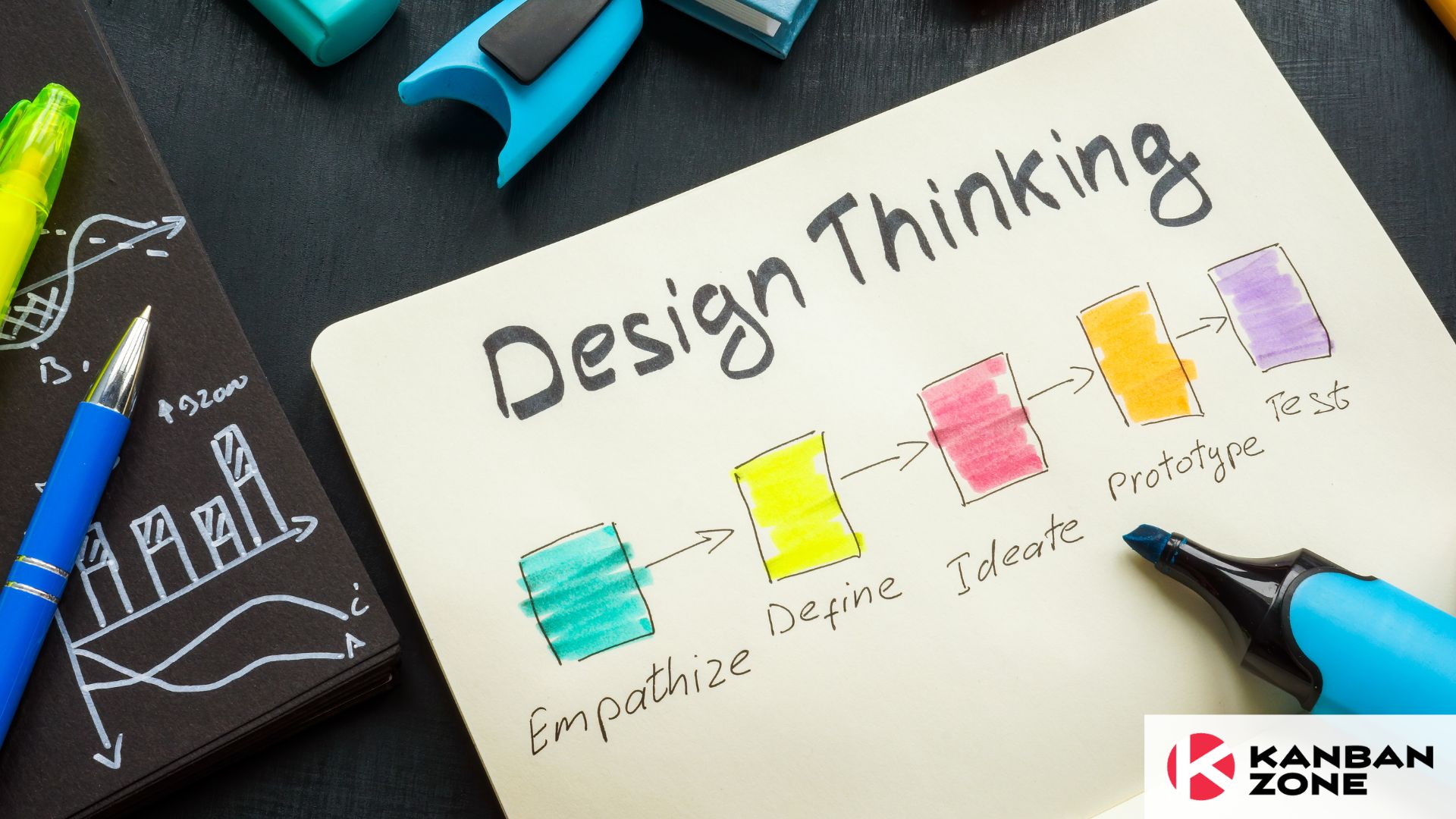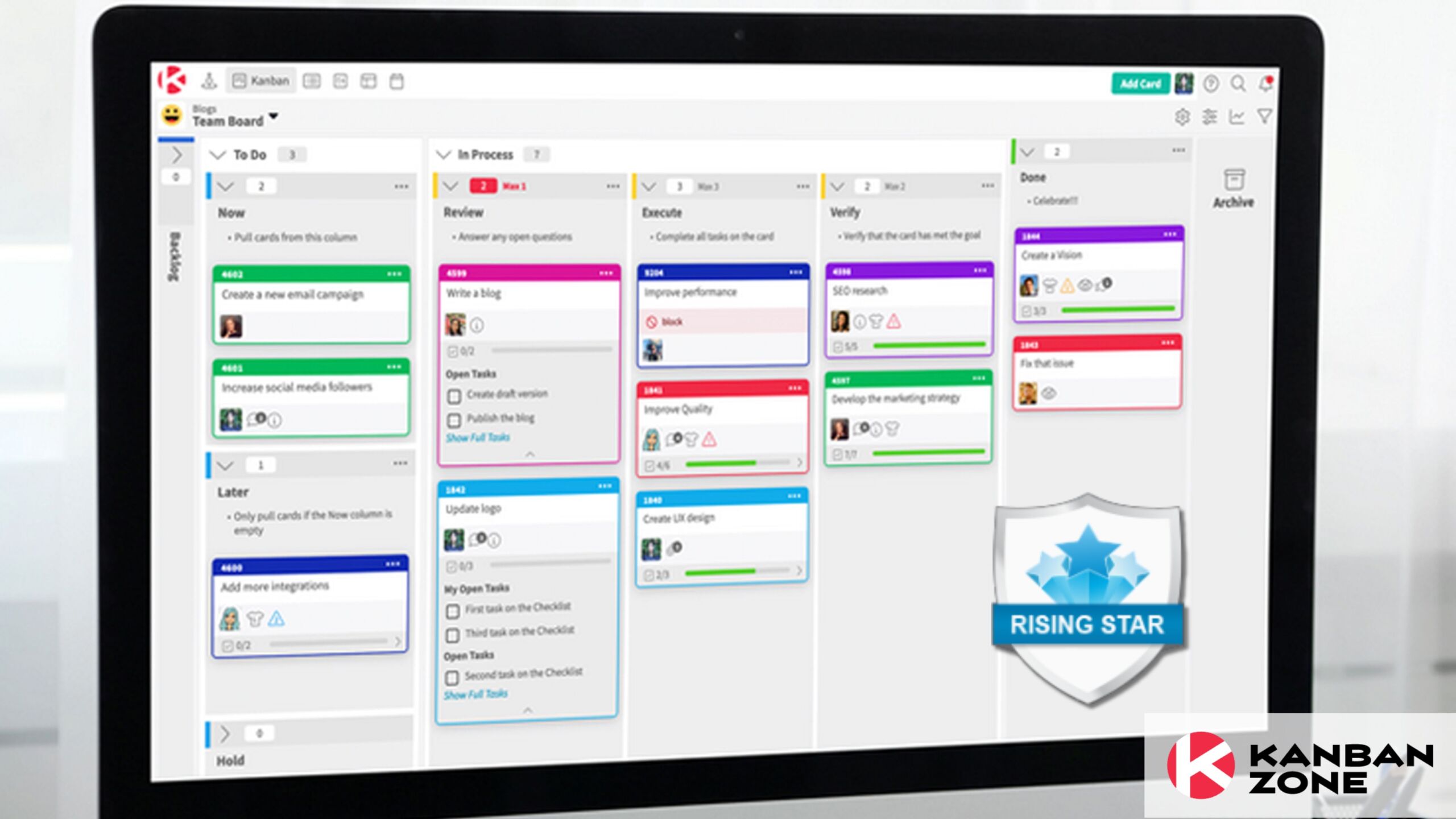
Design thinking is more than just a couple of buzzwords—it’s a unique approach to work that involves taking stock of the end user’s needs and using methods such as Kanban to serve these needs as efficiently as possible. This is why design thinking is deemed one of the cornerstones of workplace innovation
But why is this the case, and how does design thinking work?
Read on to learn all about this important driver of innovation in the workplace and how the 5 stages of design thinking can be applied in the workplace to foster creativity among teams.
What is Design Thinking?
Design thinking focuses on understanding the needs and desires of the users to increase creativity in the workplace. The idea is simple—knowing what users want and value makes it easier for teams to generate innovative solutions for them.
Design thinking centers around innovation – but this is not to say it is merely about generating new ideas. Design thinking is also about being aware of customer needs and creating solutions that resonate on a deeper, more meaningful level with customers. This approach enables collaboration between team members and ensures employees feel like they are not just cogs in a machine but also a valuable source of innovation for the company.
For example, a call center that wants to improve its customer satisfaction and retention rates can use design thinking along with powerful business tools such as visual collaboration platforms to empathize with customers, visualize their pain points and expectations, and create solutions appropriately.
To take this a step further, call center QA software can then be employed to ensure the successful implementation and use of these tools.
In simple words, design thinking can be used to establish new ways of enhancing the final product/service offered to end users.
How Design Thinking Feeds Innovation at the Workplace
Design thinking feeds innovation at the workplace because it is a method and culture of thinking conducive to creating creative solutions for users. It is typically used to foster collaboration in the workplace in a way that places customers front and center of everything employees do in the office.
This approach not only helps teams tackle complex problems on a micro-level but also helps businesses as a whole to adapt to changing consumer preferences on a macro-level. Moreover, it helps with increasing workplace agility as employees are encouraged to think of creative and resource-efficient ways to fulfill customer needs. This subsequently catalyzes the rate at which issues are resolved while also helping to foster workplace innovation.
Applying the 5 Stages of Design Thinking to Foster Workplace Innovation
1. Empathy
The first stage of the design thinking process requires staff to thoroughly understand and empathize with customer needs and preferences. This requires the use of various research techniques such as interviews, observations, and surveys to identify problems customers are facing in an effort to build empathy and trust.
Empathizing in this manner is a great way for teams to develop solutions that customers find meaningful. Additionally, this approach enables teams to create tailored and creative solutions for customers, thereby driving innovation in the workplace.
The key to building empathy with customers as a way to increase workplace innovation is to gain customer trust and build rapport. Why? Because customers who feel trusted are more likely to provide an accurate overview of the problems they’re facing, making it easier for teams to formulate innovative solutions.
2. Defining Problems
The second stage of design thinking is about accurately defining problems. This is achieved by analyzing user data to establish a clear problem statement around which various projects are established and strategized through project management templates.
This can be done by using various research methods such as interviews and focus groups. Once the data is collected and analyzed to find the root cause of various customer pain points, a problem statement is established that reflects customer needs and preferences as accurately as possible. This helps teams to generate and evaluate ideas as well as to test and implement solutions in the final stages of the design thinking process.
How does this all relate to workplace innovation? The answer is simple – problem definitions help teams understand where and how to direct their creativity in the workplace. As a result, teams can formulate solutions that are increasingly aligned with user needs, leading to improved workplace innovation. This approach is also integral to digital product design, as it ensures that solutions are not only innovative but also resonates with the digital ecosystem, enhancing user experiences and product effectiveness.
3. Ideating Solutions
This third stage of design thinking focuses on generating numerous creative ideas that lay the foundation for potential solutions to the problems defined in the previous stage.
The ideate stage helps the workplace to explore solutions in more detail and build on the creative thinking that led to the problem being established in the first place.
Moreover, ideating helps teams to work through a number of solutions to problems together, making it easier for them to discover opportunities to innovate in the workplace. This results in strong inter-team collaboration as everyone works together to deliver solutions that are not only ideal but also practical and innovative.
4. Prototyping Solutions
Once the ideation stage of design thinking is complete, the next step is to build prototype solutions. For example, contact center solutions providers would create an initial version (prototype) of call center software to show to users and stakeholders, so that they can then evaluate feasibility, desirability, and viability.
Prototyping is crucial to evaluate the feasibility of the solutions ideated in the previous stage of design thinking. After all, coming up with creative solutions depends on successfully identifying and learning from the failures and successes of the prototype.
5. Testing For Continuous Improvement
As we discussed in the previous point, testing prototypes increases the probability of workplace innovation. However, it is important to note that this depends on how prototypes are tested.
For instance, collecting feedback from users through interviews and focus groups is more likely to lead to workplace innovation than one-way methods such as surveys. This is because the former methods encourage communication and collaboration between users and the teams engaging in design thinking.

Key takeaways to boost workplace innovation through design thinking
Create a Workplace Environment that Intrinsically Values Design Thinking
The first method we recommend to boost workplace innovation is to create a culture of using design thinking at the workplace. This refers to fostering an environment that encourages creativity and rewards it. Promote open communication and the sharing of ideas, and celebrate the diverse ways of thinking to increase end-user satisfaction in innovative ways.
This kind of workplace often brings together individuals from different backgrounds and disciplines so that they can exchange ideas. The resulting diversity in thinking is a key driver of innovation because an array of approaches can be combined to create unique solutions.
Ideating to find solutions to complex problems in such an environment is especially important because the more complex the problem is, the more likely it is to be solved effectively through diverse thinking rather than individualistic thinking.
Train Employees on How to Use Design Thinking to Innovate at Work
Train employees on how to use design thinking as a means of innovation. The key is to emphasize empathy towards user needs at every stage of the process and train employees through avenues they enjoy.
For instance, some employees find workshops useful to develop skills like empathy, while others prefer one-to-one feedback and coaching. Whatever the method, training employees in this manner empowers them to approach challenges with creativity and develop solutions accordingly. This way, employees feel valued and motivated to contribute new ideas.
Adopt Design Thinking as a Long-term Strategy for Innovation
Our final recommendation for companies looking to boost workplace innovation through design thinking pertains to long-term thinking. The idea is to use design thinking as a long-term approach to innovation instead of a one-off solution.
We recommend implementing the stages of design thinking discussed previously in this article for optimal results. If design thinking becomes a common framework for thinking at the workplace and is deeply ingrained in how people do their work, the probability of workplace innovation increases.
The bottom line
Design thinking transforms the way companies approach problem-solving. Those who adopt design thinking are well-positioned to tap into the creative potential of their teams and come up with new ways to exceed user expectations. However, it is important to note that design thinking is most conducive to increasing workplace innovation when adopted as a culture instead of a temporary way of thinking.
Companies that cultivate a culture of empathy and welcome diverse ideas are best-positioned to take advantage of design thinking because these are long-term actions. While it might seem daunting at first, changing the company’s culture to incorporate design thinking at every stage of every process ensures continuous innovation.
In other words, design thinking must be adopted as a mindset, not a methodology. Companies that achieve this often transform into dynamic entities that continuously evolve and grow in alignment with the changing needs and desires of their users. In this ever-competitive world, such an approach is beneficial and essential for sustained workplace innovation.
This was a guest blog. Please review our guest blog disclaimer.
Learn to Work Smarter, Not Harder!
Get our top articles weekly.
Table Of Contents
Discover many more posts…







